#Henry Stimson
Text
'Ever since Oppenheimer came out, there's been a lot of debate around the fact that it doesn't depict the actual bombings of Hiroshima and Nagasaki, despite being set in the context of the creation and development of the weapon that would lay waste to them, the atomic bomb. That's for good reason, of course: the movie is about J. Robert Oppenheimer (Cillian Murphy) himself, with the script even written in first person. So, as Oppenheimer wasn't present at the bombings, it makes no sense to show them, we only get his reaction and interpretation of the facts. But there's a particular moment and line that's way more shocking than any depiction of the bombings could ever be, were they in the movie.
When Oppenheimer meets with military officers and government officials to decide the targets of the bombings, US Secretary of War Henry Stimson (James Remar) mentions that they shouldn't bomb Kyoto, because that's where he and his wife went on their honeymoon. The line creates an intense awkwardness in the room for many reasons, as well as carries a shocking effect on part of the audience. But it didn't reverberate as much as, for example, the absence of the bombings in Japan. That's symptomatic of many things in our current era of movie-going, so let's dig into it.
Christopher Nolan Allowed James Remar To Use the Line
First off, there's no arguing against it, the line itself is indeed shocking, and it's supposed to be. Recently, Oppenheimer writer and director Christopher Nolan revealed that it was improvised by James Remar, who did his own research on the character and found out that Stimson and his wife had indeed honeymooned in Kyoto. Nolan encouraged his cast to do their own research into characters, mainly because the whole script is written in first-person from Oppenheimer's perspective.
Its sprawling cast of renowned and competent actors is one of the main qualities of Oppenheimer, even if they are playing smaller roles. Remar is one of those (immediately identifiable as Dexter's Harry Morgan, for fans of the show), and his work as Secretary Stimson shows how important it is to know and understand a character before playing them. Stimson is a small role, with seconds of screen time in a movie that's three hours long, but has one of the most shocking lines in the whole thing.
So shocking, in fact, that the other actors in the scene didn't know how to react. Originally, the script mentioned Kyoto was to be removed from the bombing list for its cultural significance, but Remar delivers the honeymoon line so casually, it left the rest of the cast speechless. How do you respond to something like that? The movie provides an insightful reflection into the nature of power at the dawn of the nuclear age, and Stimson makes it clear that this kind of destructive power is to be wielded by people who seem to have completely lost touch with their humanity. Only that's not just him, it seems like part of the audience did too, but more on that later.
Stimson’s Line Denounces the Effects of American Hegemony in a Way Most Can’t See
Stimson sparing Kyoto from destruction because of his honeymoon is a perfect example of how this kind of decision is taken by individuals who aren't really the best people to take them. As decorated as he might have been, he narrowed down the cities that would be destroyed because of his own personal memories, and that's no way to ponder the death of hundreds of thousands of people. It takes power to think of this as trivial, and, usually, those who have it are the least fit to wield it.
His perspective is symptomatic of a worldview that puts his own country so above the rest of the world, he's allowed (and maybe even encouraged) to take decisions that can ultimately kill that many people so casually, especially when it comes to the US military and the idea of American exceptionalism. It sure is nice to see someone who loves their country (and yours truly sure loves his, for example), but when one sees oneself that far above, one often loses touch with what it means to kill, for example. Oppenheimer makes it clear that, after Hitler's suicide, Japan's capitulation was a matter of time and the scientists even start to question whether they should continue their research. But they aren't really the people with power; they do have knowledge, but, contrary to popular belief, those two sometimes aren't the same thing. The military has power and sees its country as so above the rest, the world is literally a playground for people like Stimson to take decisions based on personal memories. But how do you weigh someone's life against a show of power?
We don't have to go far to question that and conclude that, ultimately, we have succumbed to this nationalistic way of looking at the world that people like Stimson helped consolidate in favor of the dominant power. All it takes is going to the movies. Hollywood has a long history of struggling with depicting and talking about the nuclear bombings in World War II, it rarely produces movies that openly criticize it like Oppenheimer does. That's why, for example, it's being compared to Stanley Kubrick's Dr. Strangelove, because it's the closest reference most people have. When Hollywood manages to use this as inspiration for tragic stories, it needs to build a visual spectacle to go along with it, like in Rogue One: A Star Wars Story, and it often makes people completely miss the point of the whole thing.
But even Japanese works on the subject have been incorporated and twisted, or simply downplayed. Grave of the Fireflies, for example, is one of Studio Ghibli's masterpieces, but it's bothersome to think about it when they have so many other heartwarming movies. Even more graphic approaches, like Godzilla (in which the metaphor is pretty clear as the monster being the bomb), have been turned into Hollywood blockbusters, with the Japanese side of it relegated to "the crazy old scientist" who's been traumatized by the monster as Ken Watanabe is in the latest Universal movies.
The Audience Is Losing Its Ability To Watch and Reflect on What They See Onscreen
As of late, especially since the end of the pandemic, going to the movies has been a nightmare (at least in Brazil, where yours truly resides). People now casually talk throughout the whole movie, browse social media, and even take pictures of the big screen. We love to see movie theaters packed again, we really do, but the Barbenheimer phenomenon all but intensified this, because now people want to show they've been to the movies and taken part in this cultural event without bearing in mind that, for example, Oppenheimer is a tragedy that requires a lot of afterthought.
Nowadays, people go to the movies with two things in mind: either to be entertained by impactful imagery or to see what they think to be a reflection of themselves on the screen. Barbie sure provides both, and it's a brilliant movie filled with insightful criticism that some are also failing to see, while Oppenheimer is the opposite. It's a long and dense movie that takes its time and relies solely on dialogue to move forward, making lines like Stimson's extremely important. It's interesting to see people talk about how Oppenheimer doesn't show the actual bombings, for example, but then they don't talk about Stimson's line, because it's what makes it pretty explicit that the movie is criticizing the deed and how the decision was taken based solely on the power it would grant his country afterward.
Dialogue doesn't impact people anymore unless it's meant to create impactful imagery. As Stimson's line doesn't, the audience fails to read what it implies, and it shows how uninterested people are in interpreting what's shown and said on screen. This is indicative of a culture that doesn’t know how to react or even identify proper criticism because people have been so desensitized, they actually lost their ability to feel impacted by words. Who knows, there probably are people who found Stimson's line cute instead of shocking.'
#Oppenheimer#Christopher Nolan#James Remar#Hiroshima#Nagasaki#Henry Stimson#Kyoto#Cillian Murphy#Grave of the Fireflies
4 notes
·
View notes
Text
Paris Calls It Quits - France Surrenders - June 20, 1940
Paris – June 1940 – things were going to look a bit different for the next four years.
https://pastdaily.com/wp-content/uploads/2013/06/news-for-june-20-1940.mp3
– News for June 20, 1940 – NBC – Gordon Skene Sound Collection –
News for this June 20th in 1940 was not the most optimistic, especially if you were around Paris at the time. Word from the government, relocated to Bordeaux, reiterated…

View On WordPress
#1940&039;s#aviation#Bordeaux#Broadcast Journalism#Broadcasts#Capitol Hill#Day in history#FDR#France#Frank Knox#Franklin D. Roosevelt#gaming#Henry L. Stimson#Libya#Middle East#New Deal#News Bulletins#news reports#Newscast#Paris#Past Daily#Politics#Presidents#transportation#United States Secretary of the Navy#United States Secretary of War
0 notes
Text
The confusing time stamp on the ww2 draft card
You may have noticed that at the back of the draft card there was a date of registration. I've long suspected it didn't reflect the actual date of the registration of Lewis Nixon at the draft board, but rather more likely to be a batch number.
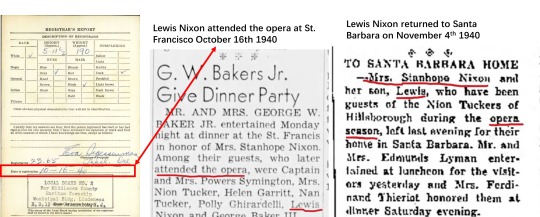
As you can see, Lewis Nixon's draft card was dated on October 16th 1940, but on that day, he was on the west coast, attending opera with his mother. He was on the west coast until at least November 4th 1940. It's impossible for him to appear at the draft board in N.J. in October.
I think his actual date of registration was on November 22nd 1940, as shown on the right corner on the front page of his draft card, along with his order number 1273.

The Senate and House on September 14 1940 approved the Selective Service Act, instituting compulsory military service for one year and mandating the registration of all American men between the ages of twenty-one and thirty-five.
But the first "lottery drawing" happened on October 29th:
On October 29, less than a week before Americans went to the polls, he [Roosevelt] stood next to Henry Stimson on the stage of the War Department auditorium. Flashbulbs from news cameras popped as the blindfolded secretary reached into a huge glass fishbowl filled with thousands of bright blue capsules and retrieved one. He handed it to Roosevelt, who opened it and announced: “The first number is one-five-eight.” A woman in the audience screamed. Her son and the more than six thousand other young Americans whose draft number was 158 would be the first ones called up to serve. For the next several hours, War Department officials drew the remainder of the numbers to determine the order in which more than a million men—of the more than sixteen million who had registered for the draft—would be inducted. ----Page 295 of THOSE ANGRY DAYS
29 notes
·
View notes
Text

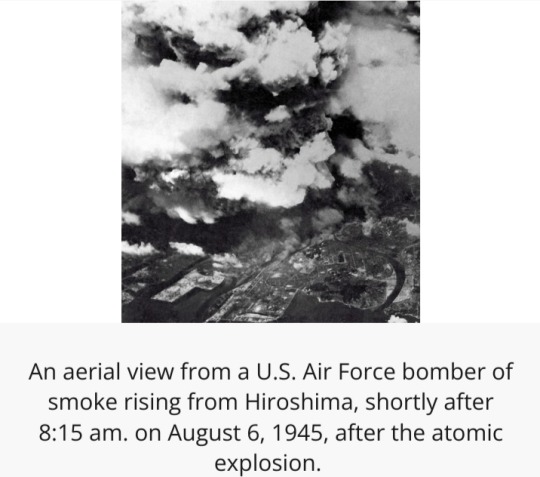
On 6 August 1945, during World War II (1939-45), an American B-29 bomber dropped the world’s first deployed atomic bomb over the Japanese city of Hiroshima.
The explosion immediately killed an estimated 80,000 people; tens of thousands more would later die of radiation exposure.
Three days later, a second B-29 dropped another A-bomb on Nagasaki, killing an estimated 40,000 people.
Japan’s Emperor Hirohito announced his country’s unconditional surrender in World War II in a radio address on August 15, citing the devastating power of “a new and most cruel bomb.”
The Manhattan Project
Even before the outbreak of war in 1939, a group of American scientists — many of them refugees from fascist regimes in Europe — became concerned with nuclear weapons research being conducted in Nazi Germany.
In 1940, the U.S. government began funding its own atomic weapons development program, which came under the joint responsibility of the Office of Scientific Research and Development and the War Department after the U.S. entry into World War II.
The U.S. Army Corps of Engineers was tasked with spearheading the construction of the vast facilities necessary for the top-secret program, codenamed “The Manhattan Project” (for the engineering corps’ Manhattan district).

Over the next several years, the program’s scientists worked on producing the key materials for nuclear fission — uranium-235 and plutonium (Pu-239).
They sent them to Los Alamos, New Mexico, where a team led by J. Robert Oppenheimer worked to turn these materials into a workable atomic bomb.
Early on the morning of 16 July 1945, the Manhattan Project held its first successful test of an atomic device — a plutonium bomb — at the Trinity test site at Alamogordo, New Mexico.
No Surrender for the Japanese
By the time of the Trinity test, the Allied powers had already defeated Germany in Europe.
Japan, however, vowed to fight to the bitter end in the Pacific, despite clear indications (as early as 1944) that they had little chance of winning.
In fact, between mid-April 1945 (when President Harry Truman took office) and mid-July, Japanese forces inflicted Allied casualties totaling nearly half those suffered in three full years of war in the Pacific, proving that Japan had become even more deadly when faced with defeat.
In late July, Japan’s militarist government rejected the Allied demand for surrender put forth in the Potsdam Declaration, which threatened the Japanese with “prompt and utter destruction” if they refused.
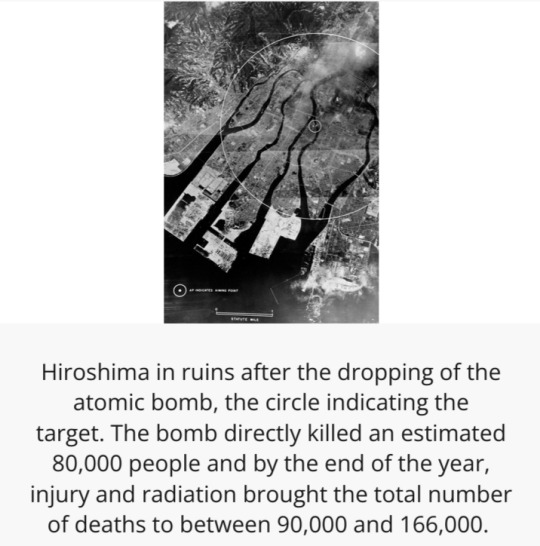
General Douglas MacArthur and other top military commanders favored continuing the conventional bombing of Japan already in effect and following up with a massive invasion, codenamed “Operation Downfall.”
They advised Truman that such an invasion would result in U.S. casualties of up to 1 million.
In order to avoid such a high casualty rate, Truman decided – over the moral reservations of Secretary of War Henry Stimson, General Dwight Eisenhower and a number of the Manhattan Project scientists – to use the atomic bomb in the hopes of bringing the war to a quick end.
Proponents of the A-bomb — such as James Byrnes, Truman’s secretary of state — believed that its devastating power would not only end the war but also put the U.S. in a dominant position to determine the course of the postwar world.
'Little Boy' and 'Fat Man' Are Dropped
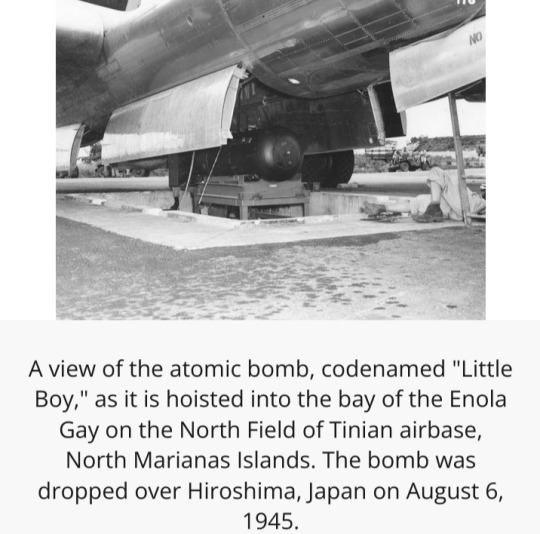
Hiroshima, a manufacturing center of some 350,000 people located about 500 miles from Tokyo, was selected as the first target.
After arriving at the U.S. base on the Pacific island of Tinian, the more than 9,000-pound uranium-235 bomb was loaded aboard a modified B-29 bomber christened Enola Gay (after the mother of its pilot, Colonel Paul Tibbets).
The plane dropped the bomb — known as “Little Boy” — by parachute at 8:15 in the morning.
It exploded 2,000 feet above Hiroshima in a blast equal to 12-15,000 tons of TNT, destroying five square miles of the city.
Hiroshima’s devastation failed to elicit immediate Japanese surrender, however, and on August 9, Major Charles Sweeney flew another B-29 bomber, Bockscar, from Tinian.
Thick clouds over the primary target, the city of Kokura, drove Sweeney to a secondary target, Nagasaki, where the plutonium bomb “Fat Man” was dropped at 11:02 that morning.
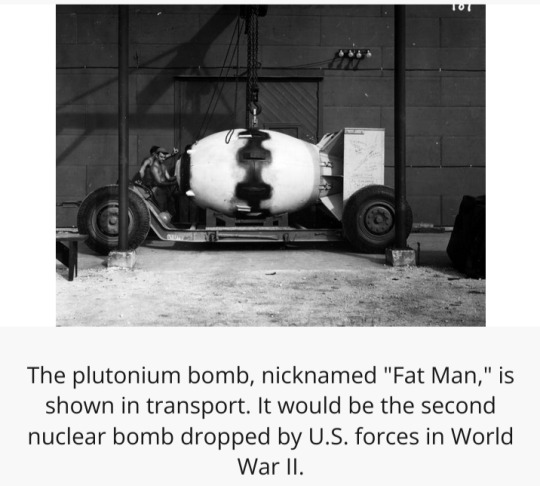
More powerful than the one used at Hiroshima, the bomb weighed nearly 10,000 pounds and was built to produce a 22-kiloton blast.
The topography of Nagasaki, which was nestled in narrow valleys between mountains, reduced the bomb’s effect, limiting the destruction to 2.6 square miles.
Aftermath of the Bombing

At noon on 15 August 1945 (Japanese time), Emperor Hirohito announced his country’s surrender in a radio broadcast.
The news spread quickly.
“Victory in Japan” or “V-J Day” celebrations broke out across the United States and other Allied nations.
The formal surrender agreement was signed on September 2, aboard the U.S. battleship Missouri, anchored in Tokyo Bay.
Because of the extent of the devastation and chaos — including the fact that much of the two cities' infrastructure was wiped out — exact death tolls from the bombing of Hiroshima and Nagasaki remain unknown.
However, it's estimated roughly 70,000 to 135,000 people died in Hiroshima and 60,000 to 80,000 people died in Nagasaki, both from acute exposure to the blasts and from long-term side effects of radiation.


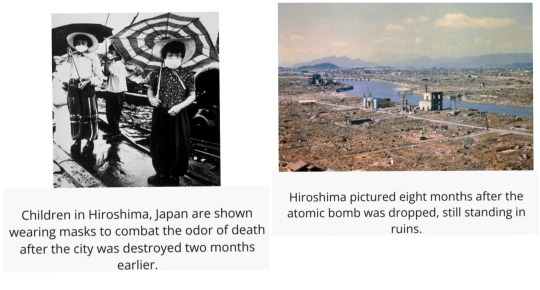
#Bombing of Hiroshima and Nagasaki (1945)#6 August 1945#atomic bomb#Hiroshima#Nagasaki#B-29 bomber#A-bomb#U.S. Army Corps of Engineers#The Manhattan Project#nuclear weapons research#Office of Scientific Research and Development#War Department#World War II#WWII#uranium-235#plutonium (Pu-239)#nuclear fission#plutonium bomb#J. Robert Oppenheimer#Oppenheimer#Trinity test#Potsdam Declaration#General Douglas MacArthur#Operation Downfall#Henry Stimson#General Dwight Eisenhower#Enola Gay#Colonel Paul Tibbets#Bockscar#V-J Day
32 notes
·
View notes
Photo

formative quote for me yet it was made by fucking u.s. secretary of war henry l. stimson lmao
#hemmingway said smth similar but this was the one that stuck w me & the former has differing implications I think#kind of like how to make someone responsible you must give them responsibility#moth.txt
32 notes
·
View notes
Text
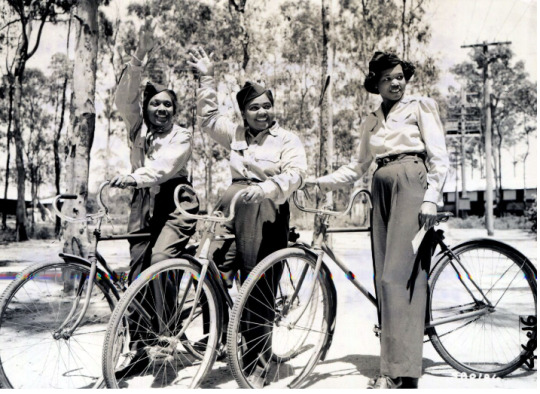
Original caption: “arriving in Australia, the first Negro nurses to reach these shores try bicycle riding near their quarters in Camp Columbia, Wacol, Brisbane.” 2nd Lts: L-R: Beulah Baldwin, Alberta Smith, and Joan Hamilton. 11/29/1943. NARA ID 178140880.

“First Negro WAVES to enter the Hospital Corps School at Nat'l Naval Medical Center, Bethesda, MD.” L-R Ruth C. Isaacs, Katherine Horton and Inez Patterson. 3/2/1945. NARA ID 520634.
BLACK (military) NURSES ROCK!
By Miriam Kleiman, Public Affairs
For National Nurses Day we highlight Black nurses who served with courage and distinction in WWII.
“In the European Theater… are the first units of Negro nurses and WACS to go overseas… They are described by their Commanding Officer as being the equals of any nurses in the area…”—Truman Gibson, Jr, chief adviser on racial affairs to Secretary of War Henry Stimson
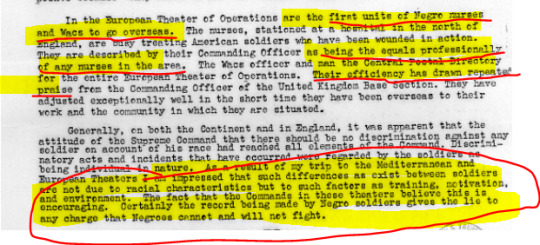
Statement by Truman Gibson, Jr., Aide on Negro Affairs to Secretary of War Stimson, 4/9/1945. NARA ID 40019813 (full doc below). Gibson was the 1st Black awarded the Presidential Medal of Merit, for advocating for black soldiers during WWII.
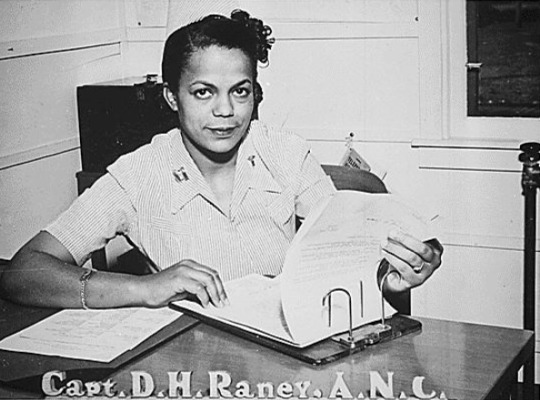
Capt. Della H. Raney, Army Nurse Corps, head of nursing at hospital at Camp Beale, CA, “has the distinction of being the first Negro nurse to report to duty in the present war…” NARA ID 535942.
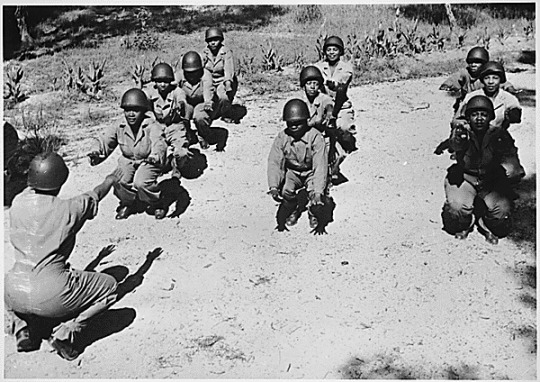
“American Negro nurses, commissioned second lieutenants in the U.S. Army Nurses Corps, limber up their muscles in an early-morning workout during an advanced training course at a camp in Australia. The nurses will be assigned to Allied hospitals in the southwest Pacific theater.” 2/1944. NARA ID 535782.

Commissioning ceremony: Phyllis Dailey, 2nd from right, became the 1st Black nurse in the Navy Nursing Corps 3/8/1945. NAID 520618.
See also:
We honor WW2’s #InvisibleWarriors! Black Women in WWII
Pictorial History of Black Women in the US Navy during World War II and Beyond, by Dr. Tina Ligon, Rediscovering Black History.
The Closed Door of Justice: African American Nurses and the Fight for Naval Service, by Alicia Henneberry, The Text Message.
Black Female WWII Unit Gets (Congressional) GOLD! WWII’s 6888th Central Postal Directory Battalion
Their War Too: US Women in the Military During WWII, The Text Message
Pictures of African Americans During World War II
African American Women in the Military During WWII
African American Activities in Industry, Government, and the Armed Forces, 1941-1945).
African Americans and the War Industry by Alexis Hill, The Unwritten Record blog
I too, am Rosie by Dr. Tina Ligon, Rediscovering Black History
Women’s History Month and African American History National Archives News special topics pages.
Mary McLeod Bethune to Return to Capitol Hill

#blacknursesrock#blacknurseskillingit#healthcareaccess#blm#nursing history#minoritynurse#callthemidwife#civil rights#african american history#worldwar2#womeninworldwarii#women's history
360 notes
·
View notes
Quote
Now, what is Truman really thinking? That is a harder question. And I think the most interesting evidence of it - this is indirect. But on the day that Truman gives the order to drop the atom bomb, July 25, 1945, that evening he writes in his diary, I have ordered the secretary of war, Henry Stimson, and we are in agreement that the target should be purely military, not civilian - that we should kill soldiers and sailors, not women and children. Well, what is he thinking? Because as we've mentioned earlier, the aim point of the bomb was a bridge in the middle of Hiroshima. Of course it was going to kill women and children. It did. As it happened, it killed about 10, maybe 20,000 soldiers, but 50 or 60,000 civilians - right away, instantly, including most of them women and children, because the men were off at war.
Looking back at the decision to drop atomic bombs on Hiroshima and Nagasaki
5 notes
·
View notes
Text
'This weekend’s anniversary of the end of World War II, coming at a time when we continue to talk heatedly about the film “Oppenheimer,” reminds me of how long I showed images of the Hiroshima mushroom cloud to introduce class lectures on wartime Japan. They were dramatic; they evoked power; they were horrific. And students loved them.
I could have used other images. I might have shown a photo of a man I met in 1979 at the Hiroshima bomb memorial. Standing with his daughter in front of thousands of peace cranes, he told me she was 34 but had the mind of an 8-year-old — because she was born on the day the bomb was dropped. Her mother died, and she survived.
Or I could have talked about Dr. Michihiko Hachiya, who saw a flash on the morning of Aug. 6, 1945, after a night’s work in a Hiroshima hospital. He jumped up to go outside and find what caused the flash. When he looked down, he saw that his clothes had vanished; he was naked.
But I preferred the cloud image because it attracted students.
In later years, my attraction to that image waned, however, as I saw how it over-simplified the bomb, capturing its power but not its tragedy. I largely stopped showing it.
After seeing “Oppenheimer,” I have become more certain than ever that we must begin looking at the bomb — at all nuclear weapons — in a more nuanced and honest way if our world is to remain livable.
When we hear the father of the atomic bomb say, “All war becomes unthinkable,” when we see him grapple with what he produced, we should be warned about the danger of accepting the easy-to-chew narratives that still shape our understanding of Hiroshima — and of nuclear weapons today.
The decision to drop the bomb was not, as President Harry Truman suggested, a simple one. Nor did it represent any consensus that 1 million American GIs would die if an invasion of Japan were necessary. Estimates of how many Americans would be killed in fighting on Japan’s mainland varied greatly in discussions about whether to use nuclear weapons, but most military experts then put the losses in the tens of thousands. The million figure became “truth” only when Secretary of War Henry Stimson introduced it in a 1947 Harper’s magazine article.
There also were disagreements about whether the bomb should be used at all. The debates were fierce, with Stimson expressing doubts and Secretary of State George Marshall opposing the use of nuclear weapons against civilians. Fleet Admiral William Leahy called them barbaric.
And there was sharp disagreement about whether atom bombs even were needed to make Japan surrender. Today’s historical consensus is that Japan would have surrendered by the end of 1945, regardless. After the war, President Dwight Eisenhower said he had argued against dropping atom bombs because Japan’s defeat already was assured. We already had killed enough Japanese with regular bombs — nearly 90,000 on a single March night in Tokyo, for example — to make continuation of the war next to impossible.
The decision to open the nuclear age was understandable. Wartime invites costs-be-damned thinking. But such thinking in this case unnecessarily opened the door to the possibilities that frightened Oppenheimer — possibilities that could quite literally end human civilization.
That being the case, we must look at the war-driven language that saturates our discussions of Europe and Asia today.
We continue to be told that Ukraine has no choice but to fight until the Russians are driven out yet hear almost nothing about the more honest and complicated truth: That the only way to avoid endlessly continuing deaths and destruction is through negotiations.
On the other side of the globe, our officials toss around confrontational language about China, labeling Xi Jinping a “dictator” and threatening to employ “all” military options, with no discussion of the devastation that would result if we stumbled into war with nuclear-armed China.
People are right to condemn Vladimir Putin’s aggression and Xi Jinping’s threats against Taiwan. But the short-sighted, war-fogged thinking that brought us Hiroshima still dominates our discussions of Ukraine and eastern Asia. This time, however, it is a world stocked not with two small bombs but 10,000 massive nuclear weapons.
One only wishes Oppenheimer had been right when he pronounced war unthinkable in a nuclear-armed world, a world that could be destroyed before climate change even gets its own chance to do so.'
0 notes
Text
History
March 3
March 3, 1913 - A women's suffrage march in Washington D.C. was attacked by angry onlookers while police stood by. The march occurred the day before Woodrow Wilson's inauguration. Many of the 5,000 women participating were spat upon and struck in the face as a near riot ensued. Secretary of War Henry Stimson then ordered soldiers from Fort Myer to restore order.
Birthday - Railroad car builder George Pullman (1831-1897) was born in Brocton, New York. He improved railroad sleeping accommodations, developing the folding upper berth and lower berth designs. His company went on to become the biggest railroad car building organization in the world.
Birthday - Telephone inventor Alexander Graham Bell (1847-1922) was born in Edinburgh, Scotland. Bell and his father were involved in teaching deaf persons to speak. Bell developed an interest in the vibrating membrane as a method of electrically transmitting sounds. His very first sentence spoken on the newly invented telephone on March 10, 1876, was to his assistant, "Mister Watson, come here, I want you."
0 notes
Text
Henry stimson and his wife's love of tourist memories of kyoto, japan, saved the city from the atomic bomb.
The man who saved Kyoto from the atomic bomb
Henry L. Stimson
|
There’s Something You Don’t Know About Tourism… Thoughty2 @Thoughty2
youtube
06/02/2024, tuesday 06 febuary 2024, 05:17 a.m, indore, madhya pradesh, india.
#Thoughty2 @Thoughty2#There’s Something You Don’t Know About Tourism…#amit shridhar#amitshridhar#Youtube
0 notes
Text
proof that they were casting younger and younger newsies since broadway
These are the ages of the obc members in 2012 and the tour members in 2016 (when they did the proshot)
Race - (OBC) R. Breslin 23 // 19 Ben. C (Proshot)
Finch - (OBC) Aaron 29 // 22 Iain (Proshot)
Mush - (OBC) Ephraim 27 // 20 Nick (Proshot)
Albert - (OBC) Garett 26 // 21 Sky (Proshot)
Jojo - (OBC) Thayne 30 // 21 Joshua. B (Proshot)
Elmer (OBC) Evan 25 // 19 A. Zas (Proshot)
the ones that are similar is the
Specs - (OBC) R. Steele 22 // 22 Jordan. S (Proshot)
Sniper - (OBC) Alex. W 26 // 26 Daniel Swizter (Proshot)
Tommy Boy - (OBC) Tommy 22 // 21 M. Dameski (Proshot)
Oscar Delancey (OBC) Brendon 25 // 24 A. Norman (Proshot)
the ones that are the opposite:
Morris Delancey - (OBC) Mike. F 20 // 23 Devin. L (Proshot)
(more severe)
Romeo - (OBC) Andy 17 // 27 Nico (Proshot)
Buttons - (OBC) Jess. L 20 // 28 Chaz (Proshot)
the one that I couldn't figure out:
Henry - (OBC) Kyle was 27 // but I couldn't for the life of me find Michael Rio's age
(Ignoring New- Newsies (roles created in the proshot that doesn't really have an equivalent in the OBC)
Mike and Ike - (OBC) Mike Faist and Brendon Stimson // Jacob and David Guzman (Proshot) (because it's just the Delanceys in the OBC and tour but its purpose changed only in proshot - being new newsies instead of just roles for the Delanceys to play when they're offstage)
(to add on to mike and ike - it's the same thing to tommy boy but I only did tommy boy because tommy was spot in the proshot and not tommy boy)
Smalls - (OBC) Laurie Veldheer // Julian DeGuzman (Proshot) THEY CHANGED THIS CHARACTER DRASTICALLY, they should have kept my girl Smalls and gave Julian another name cause wtf
these are the true new-newsie names that didn't exist in OBC
Kenny - Jack Sippel - (name inspired by Kenny Ortega)
Hot Shot - JP Ferreri
Vince / Myron - Stephen Hernandez
Kid Blink - Andy Richardson (92s name)
Willie / Bart - Andrew Wilson
#(also just realised that this is why I find it weird that people consider Elmer a baby - I think about 25 year old Evan and they think abou#newsies#newsies broadway#newsies live#newsies proshot#this is for research purposes#HOW IS ANTHONY NORMAN A YEAR OLDER THAN DEVIN LEWIS THAT IS CRAZY TO ME#newsies archive
24 notes
·
View notes
Text
The South Korean Nuclear Horn: Daniel 8
Weapons Used in Operation Vijay, kept at Kargil War Memorial, Drass.
South Korea as a Nuclear State: Trade-offs and Choices
BY: JAGANNATH PANDA
OCTOBER 30, 202
This piece was co-published as part of a series with South Asian Voices (SAV), a publication of the Henry L. Stimson Center.
South Korea’s launch of its Indo-Pacific strategy in December 2022 started the country’s ascent into…

View On WordPress
0 notes
Video
youtube
John J. Mearsheimer, “The Roots of Liberal Hegemony”
Nov 22, 2017
Henry L. Stimson Lectures on World Affairs.
John J. Mearsheimer, R. Wendell Harrison Distinguished Service Professor of Political Science and the co-director of the Program on International Security Policy at the University of Chicago, gave a series of three lectures in November on “Liberal Ideals & International Realities” for the Henry L. Stimson Lectures on World Affairs at the Whitney and Betty MacMillan Center for International and Area Studies at Yale.
“The Roots of Liberal Hegemony,” November 13, 2017 • John J. Mearsheimer, “The Roots of Li...
“The False Promise of Liberal Hegemony,” November 15, 2017 • John J. Mearsheimer,
“The False Promi... “The Case for Restraint,” on November 16, 2017 • John J. Mearsheimer, “The Case for Re...
Sponsored by the Whitney and Betty MacMillan Center for International and Area Studies and the Yale University Press.
0 notes
Text

Global Research: »The Oppenheimer 2023 Film: Henry Stimson Didn’t Go to Kyoto on His Honeymoon http://dlvr.it/StNg4d «
0 notes
Link
In one scene, US Secretary of War Henry Stimson makes a trivial decision about the targets for the atomic bombs
0 notes
Text
Christopher Nolan on J. Robert Oppenheimer and His Contradictions
For example, there’s a moment where James Remar, who played [Henry L. Stimson, Truman’s secretary of war], kept talking to me about how he learned that Stimson and his wife had honeymooned in Kyoto. And that was one of the reasons that Stimson took Kyoto off the list to be bombed.
I had him crossing the city off the list because of its cultural significance, but I’m like, just add that. It’s a…
View On WordPress
0 notes